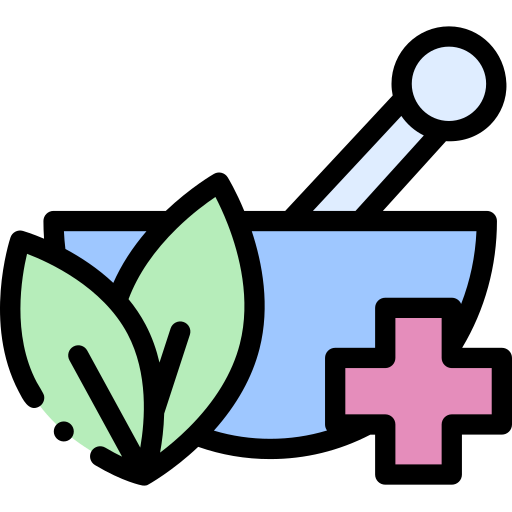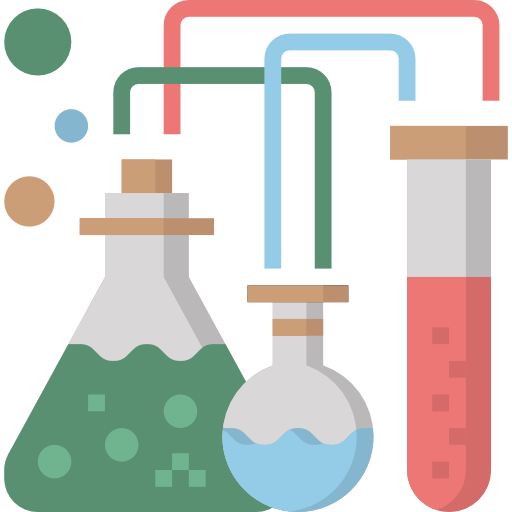Trending






Medical Differences FAQs
This post lists the Law Differences FAQs (Frequently Asked Questions and answers) also a collection of many Law Differences FAQs .
What is Breathing?
Breathing means the exchange of gases through Inhalation and Exhalation.
Breathing is also called External Respiration because we take oxygen in and breathe out carbon dioxide through our nose.
In the breathing process of all vertebrates, there is a branch of tubes that connects the nose and alveoli. It is a voluntary process that involves contraction and relaxation of muscles in the thoracic region.
What is Respiration?
Respiration on the other hand is an internal complex process.
In which organic compounds are broken into carbon dioxide and water while releasing energy. It is also called Internal Respiration. It is an involuntary process. It is mainly of two types
- Aerobic Respiration-Happens in presence of oxygen
- Anaerobic Respiration-Happens in absence of oxygen
Breathing Vs Respiration
Given below are the key differences:
|
Breathing |
Respiration |
|
It is a biophysical process of inhalation and exhalation where gases are exchanged |
It is a biochemical process that releases energy from organic compounds which are used in carrying out various physical activities |
|
Mainly two steps are involved inhaling and exhaling |
It is a three-step process which is glycolysis, Kerb’s cycle and electron transport chain |
|
Voluntary process |
Involuntary Process |
|
No metabolic reaction involved |
Metabolic Reaction is involved |
|
Exchange of gases and ventilation happens in breathing |
Exchange of gases and breaking of complex compounds into simple ones happens |
|
It is an extracellular process |
It is intracellular |
|
Occurs in respiratory organs like the nose |
Occurs inside mitochondria of cells |
|
Energy is not released |
Energy is released |
|
Oxygen is released to various parts of the body |
Releases large amount of energy |
Our Human Skeleton system is made up of bones and cartilages which gives a framework to our body. The bone cells are called osteocytes and cartilage cells are called chondrocytes. Apart from this they both are also made up of collagen.
The main function of bones and cartilage is to protect the internal organs, tissues and also help in the movement of various body parts.on average a human body has 206 bones.
Let us now see the key differences-
What is a Bone?
Bones are of different shapes and sizes and their main function is to provide shape to the human body and help in the movement of the body. Bone cells are of three types:-
- Osteoblast-These are progenitor cells.
- Osteocytes-These are mature bone cells.
- Osteoclasts-Plays role in maintenance and repair of the vertebral skeleton.
The outer part of the bone is dense and compact and the inner part is a spongy honeycomb-like structure.
What is a Cartilage?
It is a living connective tissue that is found in different forms in our body. It is softer than bone and more flexible. It is mainly found in the ear, nose, and also as a cushion at the ending of joints to protect them from rubbing against each other.
Cartilages are of 3 types:-
- The elastic cartilage-maintains shape of flexible body parts like ears, nose.
- Fibrocartilage-It acts as a cushion in knee joints, hip and shoulder joints.
- Hyaline Cartilage-consists mainly of collagen fibres and protects joints where frequent movement takes place.
|
Bone |
Cartilage |
|
It is hard and rigid in nature. |
It is smooth and flexible. |
|
It gives a structural framework and assists in body movement. |
Helps in reducing friction in joints. |
|
According to structure, it can be short, long, flat irregular, sesamoid, sutural bones. |
It is of three types hyaline, elastic, fibrocartilage. |
|
There are three types of bone cells Osteoblast, osteocytes, and osteoclasts. |
Cartilage cells are of three types chondroblasts, chondrocytes, and collagen fibers. |
|
Periosteum forms the outer covering. |
Perichondrium forms the outer covering. |
|
The growth pattern is bidirectional. |
The growth pattern is unidirectional. |
What is Breathing?
Breathing means the exchange of gases through Inhalation and Exhalation.
Breathing is also called External Respiration because we take oxygen in and breathe out carbon dioxide through our nose.
In the breathing process of all vertebrates, there is a branch of tubes that connects the nose and alveoli. It is a voluntary process that involves the contraction and relaxation of muscles in the thoracic region.
What is Respiration?
Respiration on the other hand is an internal complex process.
In which organic compounds are broken into carbon dioxide and water while releasing energy. It is also called Internal Respiration. It is an involuntary process. It is mainly of two types:-
- Aerobic Respiration-Happens in presence of oxygen
- Anaerobic Respiration-Happens in absence of oxygen
Given below are the key differences:-
|
Breathing |
Respiration |
|
It is a biophysical process of inhalation and exhalation where gases are exchanged. |
It is a biochemical process which releases energy from organic compounds which are used in carrying out various physical activities. |
|
Mainly two steps are involved inhaling and exhaling. |
It is a three-step process which are glycolysis, Kerb’s cycle, and electron transport chain. |
|
Voluntary process. |
Involuntary Process. |
|
No metabolic reaction was involved. |
Metabolic Reaction is involved. |
|
The exchange of gases and ventilation happens in breathing. |
The exchange of gases and the breaking of complex compounds into simple ones happens. |
|
It is an extracellular process. |
It is intracellular. |
|
Occurs in respiratory organs like the nose. |
Occurs inside the mitochondria of cells. |
|
Energy is not released. |
Energy is released. |
|
Oxygen is released to various parts of the body. |
Releases a large amount of energy. |
Skeleton as we all know forms the basic framework of the body and helps in defining the shape of the body and protect the internal organs. It also helps in the movement of the body. Skeletons can be of two types.
What is Endoskeleton?
It is the skeleton inside the body of living organisms eg Vertebrates like birds, fish, amphibians, mammals.
What is Exoskeleton?
It is a hard outer coating that gives shape to the body and also helps in protecting organisms from their predators. It exists as scales or calcified shells and cuticles. It is found in organisms like grasshoppers, crabs, cockroaches, etc.
Insects are other examples of organisms having exoskeletons made of chitin. Wings are attached to the exoskeleton with the help of muscles.
Given below are the key differences between the two:
|
Endoskeleton |
Exoskeleton |
|
Skeleton is present inside the body. |
Skeleton is present outside the body. |
|
Bones and cartilages form endoskeleton. |
Scales, calcified shell, and cuticle form exoskeleton. |
|
It is found in invertebrates. |
It is found mainly in arthropods like insects, spiders, crabs, etc. |
|
Endoskeleton is a living structure and grows with the body. |
It is a non-living structure and does not grow. |
|
Animals with an endoskeleton do not go through molting. |
They undergo molting many times in their life cycle. |
Hormones have an important role in our body functions. Activities of different cells and organs are regulated by hormones. Hormones are secreted by different glands of our body which are of two types:
- Endocrine gland
- Exocrine gland
What is Endocrine System?
The term endocrine is derived from two Greek words-“endo” which means inside or within and ” crisis” which means to secrete. It includes endocrine glands which directly secrete hormones into the bloodstream and then it reaches their target cells and organs. It is also called ductless glands.
Adrenal, Hypothalamus, thyroid, parathyroid glands, ovaries are some glands in this system. Too low or too high secretions from these glands can result in various disorders like diabetes, hypothyroid, hypoglycemia, difficulty in conceiving, managing stress, etc.
What is Exocrine System?
It includes exocrine glands which release hormones in the duct that lead to the external part of the body. These glands are also called duct glands.
Glands in this system are sweat glands, mammary glands, sebaceous glands, salivary glands, etc Improper functioning of these glands can result in disorders like acromegaly, dwarfism, gigantism, etc.
The key difference between the two systems can be summarized below-
|
Endocrine System |
Exocrine System |
|
Endocrine glands are part of the endocrine system. |
Exocrine glands are part of the exocrine system. |
|
Secretions of these glands are directly released into the bloodstream. |
Secretions are not directly released in the bloodstream. |
|
No ducts are used. |
Ducts are used in transporting hormones from source to destination. |
|
Secretes hormones. |
Secretes enzymes. |
|
Hormones are slowly transported. |
Secretions are transported faster. |
|
Comprises of glands such as thyroid, thalamus, pituitary, liver, pancreas, and ovary. |
Includes salivary sebaceous, mammary glands, pancreas, liver, etc. |
Substance Abuse-It means consuming a substance or drug in amount or in a method that is not approved by medical professionals or against guidelines and government policies. If a person is involved in drug abuse he/she may be
- Doing illegal activities.
- It May have risk-taking nature.
- A lot of personal/interpersonal issues.
- No interest in daily activities.
Substance dependence-
It is a condition in which a person behaves normally only if he is under the influence of drugs. This happens because of drug overuse and experiences withdrawal symptoms when the drug is not available. A person under drug dependency
- Develops a tolerance for the drug because of which they need more quantity to get the same effect.
- Nausea, omitting, sweating are some of the symptoms that they develop if the drug is not available.
- Anxiety, depression.
- Unsuccessful in quitting this habit.
Let us now elaborate on the differences
|
Substance Abuse |
Substance Dependence |
|
Buying and consuming drugs without a doctor’s prescription. |
Addicted to consuming drugs. |
|
A person gets the desired effect by consuming even a small amount. |
The amount is increased to get the desired effect. |
|
A person doesn’t have a strong and sudden urge to consume the drug. |
More quantity is used to get the desired effect. |
|
It is a physical craving. |
It is psychological craving. |
|
Easy to get rid of this habit. |
Not easy to quit. |
|
Withdrawal symptoms are mild. |
Withdrawal symptoms are severe. |
|
Brain cells do not adapt to substance abuse. |
Brain cells get accustomed due to repeated use and function normally only after a person is under the effect of a drug. |
|
Does not cause addiction. |
Leads to addiction. |
There are two types of biological transport processes of cell molecules across the cell membrane.
Active Transport-Movement of cell molecules across the cell membranes from the region of low concentration to region of high concentration is called Active Transport. Energy used by the cell is in the form of ATP. Eg- endocytosis exocytosis.
Passive Transport-Passive transport on the other hand is the movement of cell molecules from high to low concentration without using cellular energy. Eg- diffusion, osmosis.
Let us now elaborate on the differences-
|
Active Transport |
Passive Transport |
|
Molecule transportation is from low to high concentration. |
Molecule transportation is from high to low. |
|
Cellular energy is required. |
Cellular energy is not required. |
|
Things that are transported are ions, large cells, complex sugars. |
Lipids, carbon dioxide water, oxygen are transported. |
|
Carrier proteins are required matrix is not involved. |
Takes place through matrix carrier proteins are not required. |
|
This is a vital process. |
This is a physical process. |
|
It is a rapid process. |
It is slower comparatively. |
Adhesion or cohesion refers to the force of attraction between similar or different molecules. These forces can also exist together eg when liquid, when stored in a container the force between edges of a liquid and surface of the container is called adhesion and cohesion, which is the force of attraction between the water molecules.
What is Adhesion?
It is the force of attraction between different types of molecules. Molecules have a tendency to attract each other. we can see adhesion when we use glue, cement, paint etc. Adhesion also helps in the transportation of water in plants through the xylem.
What is Cohesion?
It is the force of attraction between molecules of the same substances. Eg it is due to these forces water droplets are formed. Since these are forces within the same substance, it helps in giving shape and structure.
Let us now see the differences in the table given below-
|
Adhesion |
Cohesion |
|
This type of attraction is intramolecular which means between molecules of different substances. |
This is intermolecular which means between molecules of the same substance. |
|
Electrostatic attraction is included in this. |
Hydrogen bonding and van der walls forces are included in this. |
|
Mainly found in compounds. |
Mainly found in elements. |
|
A common example of adhesion is glue, paint which adheres to the surface. |
Water droplet formation, surface tension and capillary action are examples of cohesion. |
Respiration is of two types-
- Aerobic
- Anaerobic
Aerobic Respiration-means a cellular respiration process in which glucose is broken down in the presence of oxygen to produce energy. This energy is used in various body functions. It usually occurs in plants, animals, humans and other mammals also. It has mainly three stages-
- Glycolysis
- Krebs’s cycle
- Electron Transport Chain
Anaerobic Respiration-As the name says this type of respiration takes place without oxygen as oxygen is not required to break the glucose into energy. It usually occurs in unicellular organisms like bacteria fungi, protozoa etc.
Let us now understand the differences in the table given below-
|
Aerobic Respiration |
Anaerobic Respiration |
|
Happens only in presence of oxygen. |
Oxygen is not required. |
|
Always produce carbon dioxide and water along with ATP molecules. |
It may vary carbon dioxide ethanol lactic acid along with ATP molecules. |
|
Occurs in a multicellular organism. |
Occurs in Unicellular organisms. |
|
Takes place in the cytoplasm as well as mitochondria. |
Takes place in the cytoplasm. |
|
It has 3 steps- Glycolysis Kreb’s cycle Electron Transport chain |
It has 2 steps- Glycolysis Fermentation |
|
Exchange of gases happens. |
The exchange of gases does not take place. |
People often confuse between the two as both cause some kind of adverse reaction after consuming some kind of food.
What is Food Allergy?
It is an adverse immune response after consuming some particular type of food. This happens because our body mistakes some food for infection and starts developing antibodies against it. This causes an allergic reaction. The chemical that is released as a result of this reaction is called histamines. Some common food items that cause allergy are-
Fish, nuts, milk wheat and soy. Some common reactions are as follows.
- Coughing
- Vomiting
- Pain in abdomen
- Chest pain
What is Food Intolerance?
Food Intolerance n the other hand means being hypersensitive to some kind of food. It is a non-allergic reaction and happens mainly due to indigestion or the lack of enzymes required in the digestive process. For example, some people feel uncomfortable after consuming dairy products. Some of the common symptoms are as follows.
- Nausea
- Gas
- Cramps
- Headache
- Diarrohea
Let us now see the differences below
|
Allergy |
Intolerance |
|
An allergy means an adverse immune response to a specific type of food. |
Intolerance means the body reacting adversely to a particular kind of food. |
|
Food is mistaken as an infectious agent and the bstartarts produce antibodies to fight against it. |
Intolerance is due to the lack of certain enzymes or chemicals required in the digestion of food. |
|
Skin prick test, blood test and oral food challenge test is used to detect allergy. |
Elisa testing, hydrogen breath testing, elimination diet test are used for diagnosis. |
|
Symptoms appear immediately after consuming food. |
Symptoms may appear after a few hours. |
|
It can be severe and lead to a life-threatening condition. |
It is not so severe. |
















